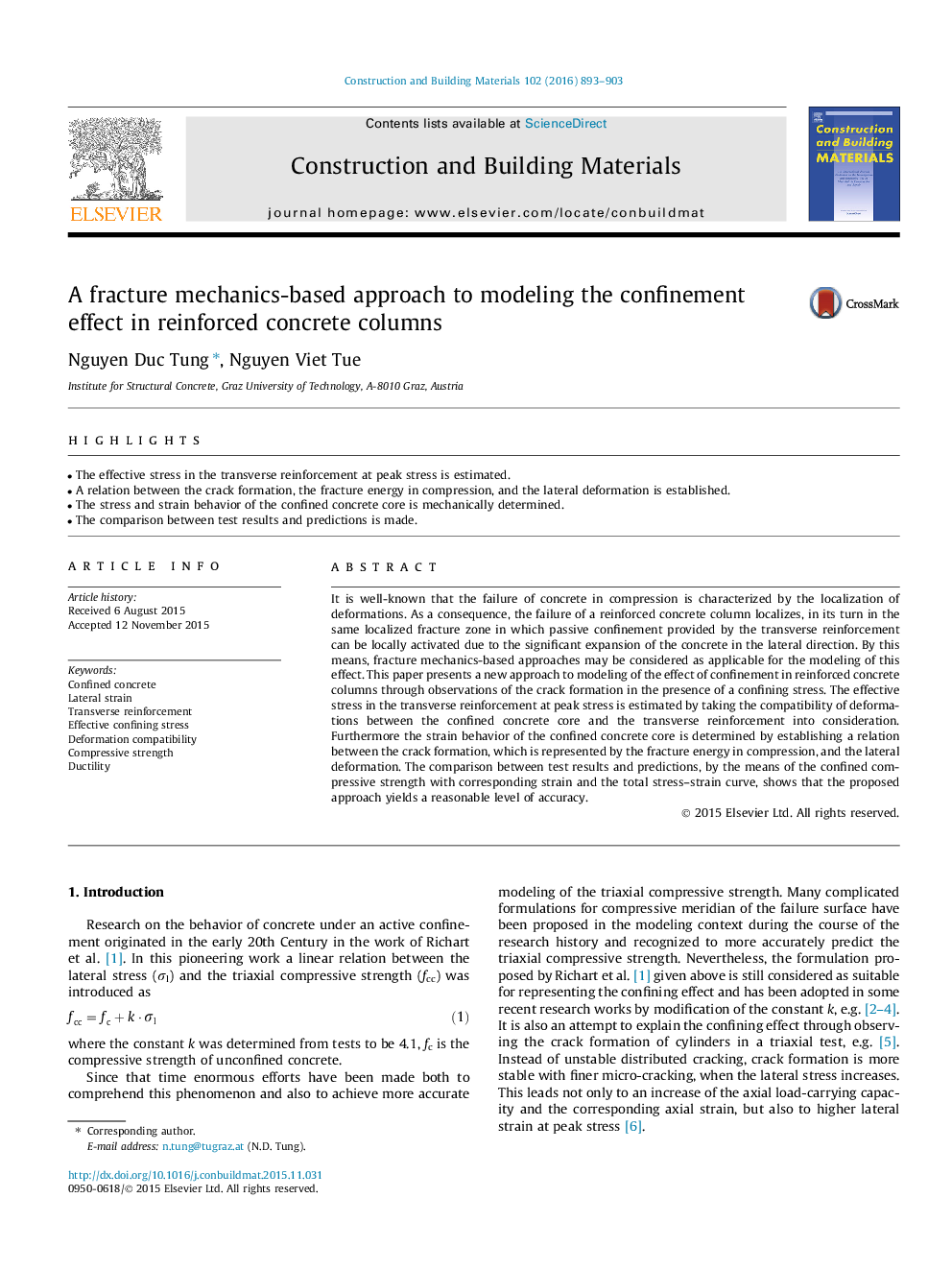| Article ID | Journal | Published Year | Pages | File Type |
|---|---|---|---|---|
| 10285120 | Construction and Building Materials | 2016 | 11 Pages |
Abstract
It is well-known that the failure of concrete in compression is characterized by the localization of deformations. As a consequence, the failure of a reinforced concrete column localizes, in its turn in the same localized fracture zone in which passive confinement provided by the transverse reinforcement can be locally activated due to the significant expansion of the concrete in the lateral direction. By this means, fracture mechanics-based approaches may be considered as applicable for the modeling of this effect. This paper presents a new approach to modeling of the effect of confinement in reinforced concrete columns through observations of the crack formation in the presence of a confining stress. The effective stress in the transverse reinforcement at peak stress is estimated by taking the compatibility of deformations between the confined concrete core and the transverse reinforcement into consideration. Furthermore the strain behavior of the confined concrete core is determined by establishing a relation between the crack formation, which is represented by the fracture energy in compression, and the lateral deformation. The comparison between test results and predictions, by the means of the confined compressive strength with corresponding strain and the total stress-strain curve, shows that the proposed approach yields a reasonable level of accuracy.
Related Topics
Physical Sciences and Engineering
Engineering
Civil and Structural Engineering
Authors
Nguyen Duc Tung, Nguyen Viet Tue,
